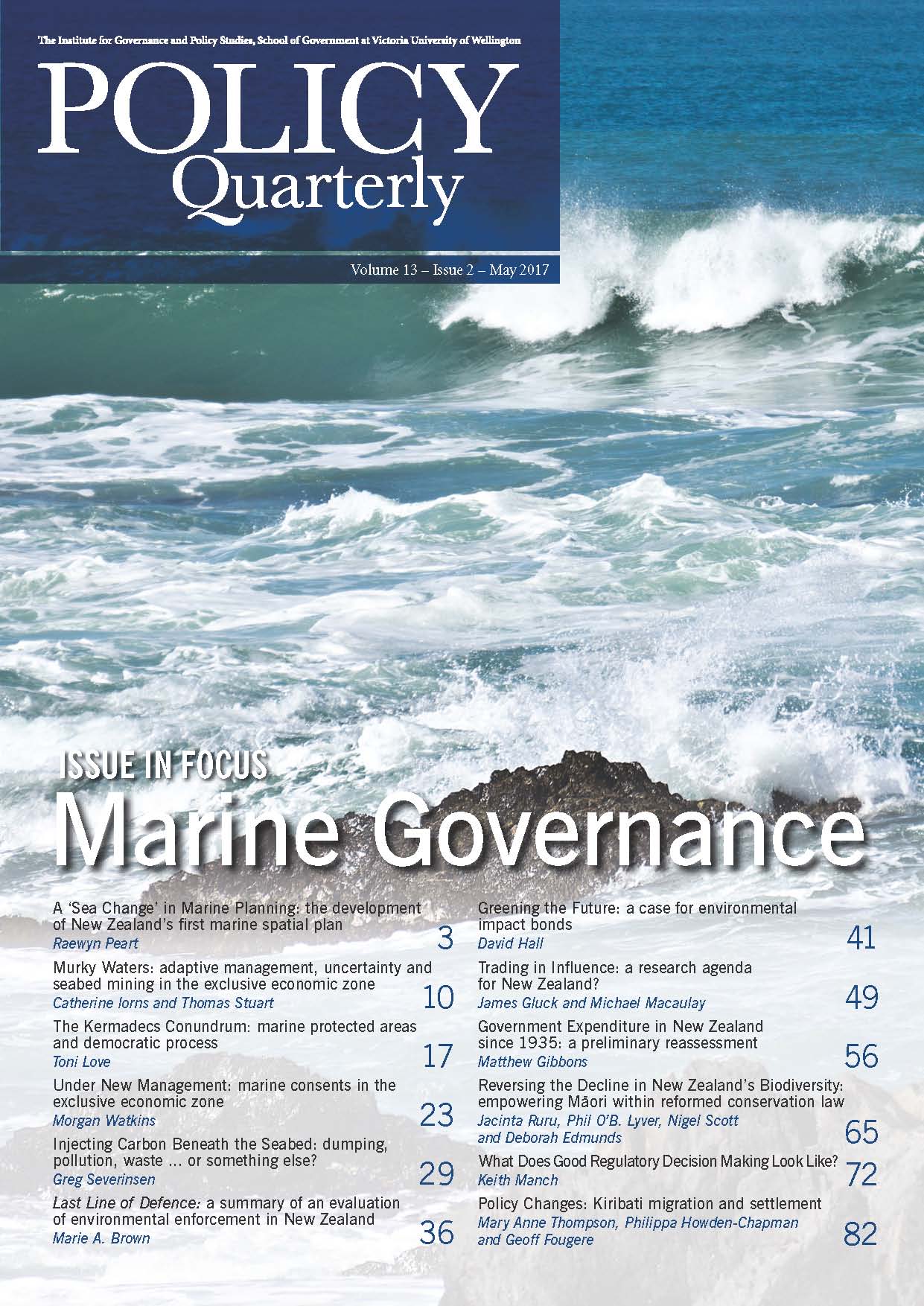Greening the future: a case for environmental impact bonds
DOI:
https://doi.org/10.26686/pq.v13i2.4662Keywords:
climate change, green investment, environmental impact bonds (EIBs), social impact bonds (SIBs), emission of greenhouse gases, environmental economicsAbstract
A central puzzle for environmental economics is how to integrate long-run costs and benefits into present-day decision making. Commonly this puzzle is described in terms of externalities. These occur when ‘an activity or transaction by some party causes an unintended loss or gain in welfare to another party, and no compensation for the change in welfare occurs’ (Daly and Farley, 2011, p.184). For example, the millions of tonnes of carbon dioxide that a large coal-fired power plant releases annually contributes to the cumulative problem of climate change, yet those who profit from producing electricity do not bear the burden of the negative consequences. Rather, these costs fall disproportionately upon future generations and communities uniquely vulnerable to the impacts of climate change. Thus, the emission of greenhouse gases creates a negative externality, because its costly impacts are external to the accounting of the actors who emit them.
Downloads
Downloads
Published
Issue
Section
License
Permission: In the interest of promoting debate and wider dissemination, the IGPS encourages use of all or part of the articles appearing in PQ, where there is no element of commercial gain. Appropriate acknowledgement of both author and source should be made in all cases. Please direct requests for permission to reprint articles from this publication to Policy-Quarterly@vuw.ac.nz.



